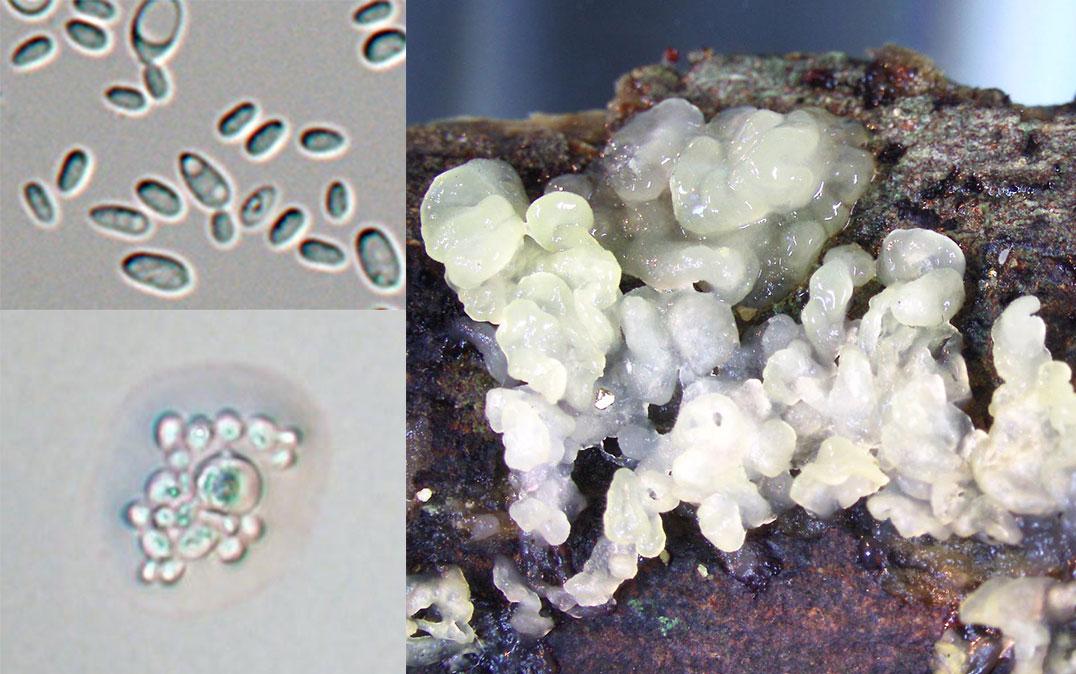Research News
Discovery, Rediscovery, and Reassignment: Redefining Fungal Biodiversity

Using specimens collected from middle-southern Japan, researchers led by the University of Tsukuba start to redefine the taxonomy of basidiomycetous fungi through identification, rediscovery, and genus reassignment of three fungal species
Tsukuba, Japan—Despite fungi being some of the most important organisms in the world, their species diversity remains poorly understood. Taxonomy is the basis for biodiversity studies. Now, not only have researchers from Japan investigated a previously undescribed species of fungi, they have also reassigned another species to a different genus and rediscovered a further species in Japan.
Researchers led by the University of Tsukuba investigated species from two fungal genera (biological classifications that group closely related species), Sirobasidium and Sirotrema, by studying evolutionary relationships between their genes (known as phylogenetic analysis), observing their form and structural features (or morphology), and analyzing their physiological characteristics to determine their taxonomic status (taxonomy being the science of naming, describing, and classifying living organisms) and mating type. Previous investigations of the genera have focused solely on the morphology of reproductive structures (often fruiting bodies), and genomic information on their single-celled asexual state is scarce.
"Sirobasidium and Sirotrema both belong to the order Tremellales," says senior author of the study Professor Yousuke Degawa. "Because of similarities in their reproductive structures known as basidia, which are found in both genera, it has been suggested that the two are closely related, but their phylogenetic relationship hasn't been fully determined because of a lack of strain and genetic sequence data for Sirotrema."
In an effort to close this gap in data, the researchers collected samples of basidiocarps (fruiting bodies that produce reproductive spores) growing on fallen branches or pine needles. They identified species of Sirobasidium japonicum and Sirotrema translucens and another novel species of Sirobasidium. Furthermore, the results of morphological analyses provided new information on the relationship between Sirotrema and Sirobasidium.
"It has been previously established that Sirotrema translucens is related to Sirobasidium because its basidia sometimes form chain-like structures," explains Professor Degawa. "However, these chains were not observed during our morphological analyses, and our results suggest that Sirotrema translucens should, in fact, be reassigned to the genus Phaeotremella." Owing to the apiculate (or pointed) shape of the basidia of the previously undescribed species, the researchers have named it "Sirobasidium apiculatum."
The identification of this new species, the rediscovery of Sb. japonicum in Japan, and the renaming of Sirotrema translucens as Phaeotremella translucens mark huge progress in the understanding of fungal diversity and further elucidation of the taxonomy of basidiomycetous fungi in Japan. These important findings have wide-ranging applications in multiple scientific fields such as cell and molecular biology, genetic engineering, medicine, and environmental science.
###
This study was partially funded by JSPS KAKENHI Grant Number 15K18720 and 19H03281 to co-author Rikiya Endoh.
Original Paper
The article, "Taxonomic study of polymorphic basidiomycetous fungi Sirobasidium and Sirotrema: Sirobasidium apiculatum sp. nov., Phaeotremella translucens comb. nov. and rediscovery of Sirobasidium japonicum in Japan," was published in Antonie van Leeuwenhoek at DOI: 10.1007/s10482-022-01787-9
Correspondence
Associate Professor DEGAWA Yosuke
Faculty of Life and Environmental Sciences, University of Tsukuba
Related Link
Faculty of Life and Environmental SciencesSugadaira Research Station, Mountain Science Center



